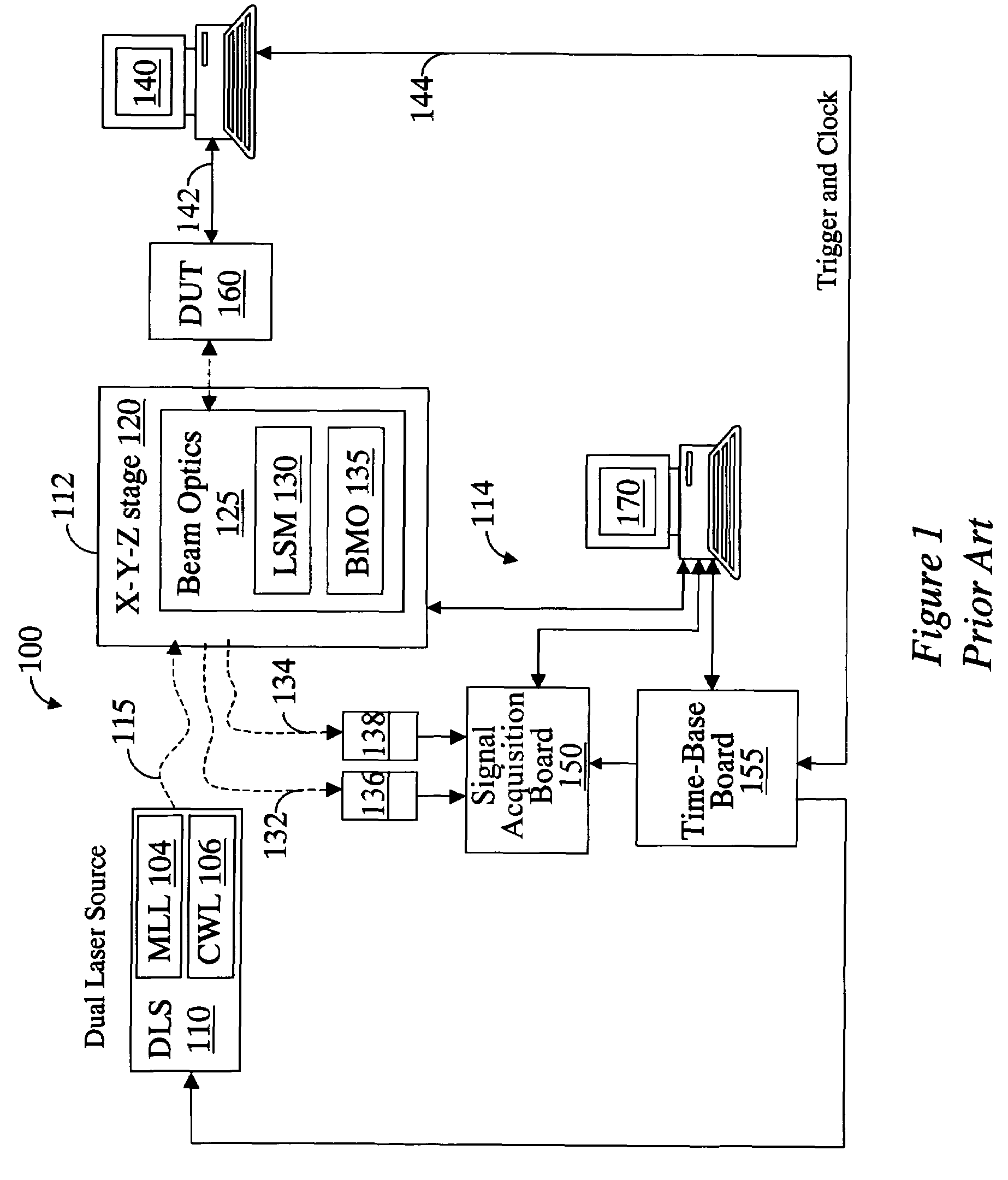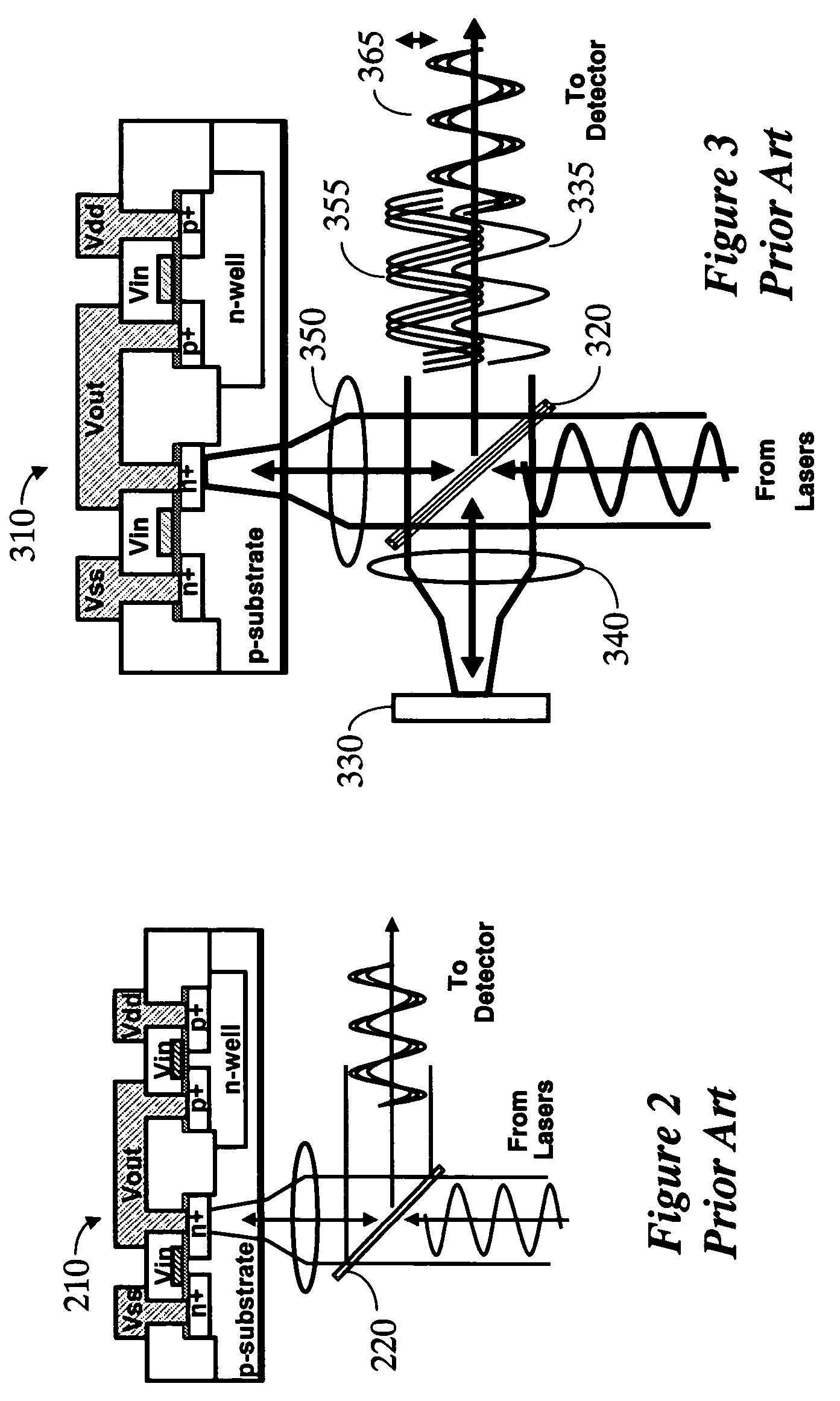Method and apparatus for measuring high-bandwidth electrical signals using modulation in an optical probing system
a high-bandwidth electrical signal and modulation technology, applied in the direction of optical radiation measurement, light polarisation measurement, instruments, etc., can solve the problems of user burden, additional setup, difficult optimization of this algorithm, etc., and achieve high temporal resolution
- Summary
- Abstract
- Description
- Claims
- Application Information
AI Technical Summary
Benefits of technology
Problems solved by technology
Method used
Image
Examples
Embodiment Construction
[0049]Various embodiments of the present invention provide apparatus and method for high bandwidth electrical signals using modulated laser in an optical probing system. These embodiments simplify the prior art system by eliminating the need for a mode-locked laser source. Consequently, the complexity and cost of the system is reduced, while its operation is simplified and adaptable to various testing environments. On the other hand, the embodiments enable probing of modern circuit devices operating at high frequencies.
[0050]An embodiment of the invention will now be described in details with reference to FIG. 6. Most notably, in this embodiment of the invention, a tunable or continuous wave (CW) laser source LS 604 is used, rather than the pulsed mode-locked laser source of the prior art. Using a CW laser source, such as a conventional tunable laser diode, reduces the overall cost and complexity of the system. Of course, as noted above, for laser probing of today's integrated circu...
PUM
 Login to View More
Login to View More Abstract
Description
Claims
Application Information
 Login to View More
Login to View More - R&D
- Intellectual Property
- Life Sciences
- Materials
- Tech Scout
- Unparalleled Data Quality
- Higher Quality Content
- 60% Fewer Hallucinations
Browse by: Latest US Patents, China's latest patents, Technical Efficacy Thesaurus, Application Domain, Technology Topic, Popular Technical Reports.
© 2025 PatSnap. All rights reserved.Legal|Privacy policy|Modern Slavery Act Transparency Statement|Sitemap|About US| Contact US: help@patsnap.com



